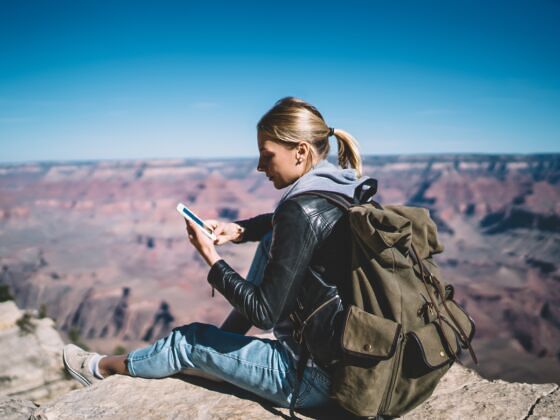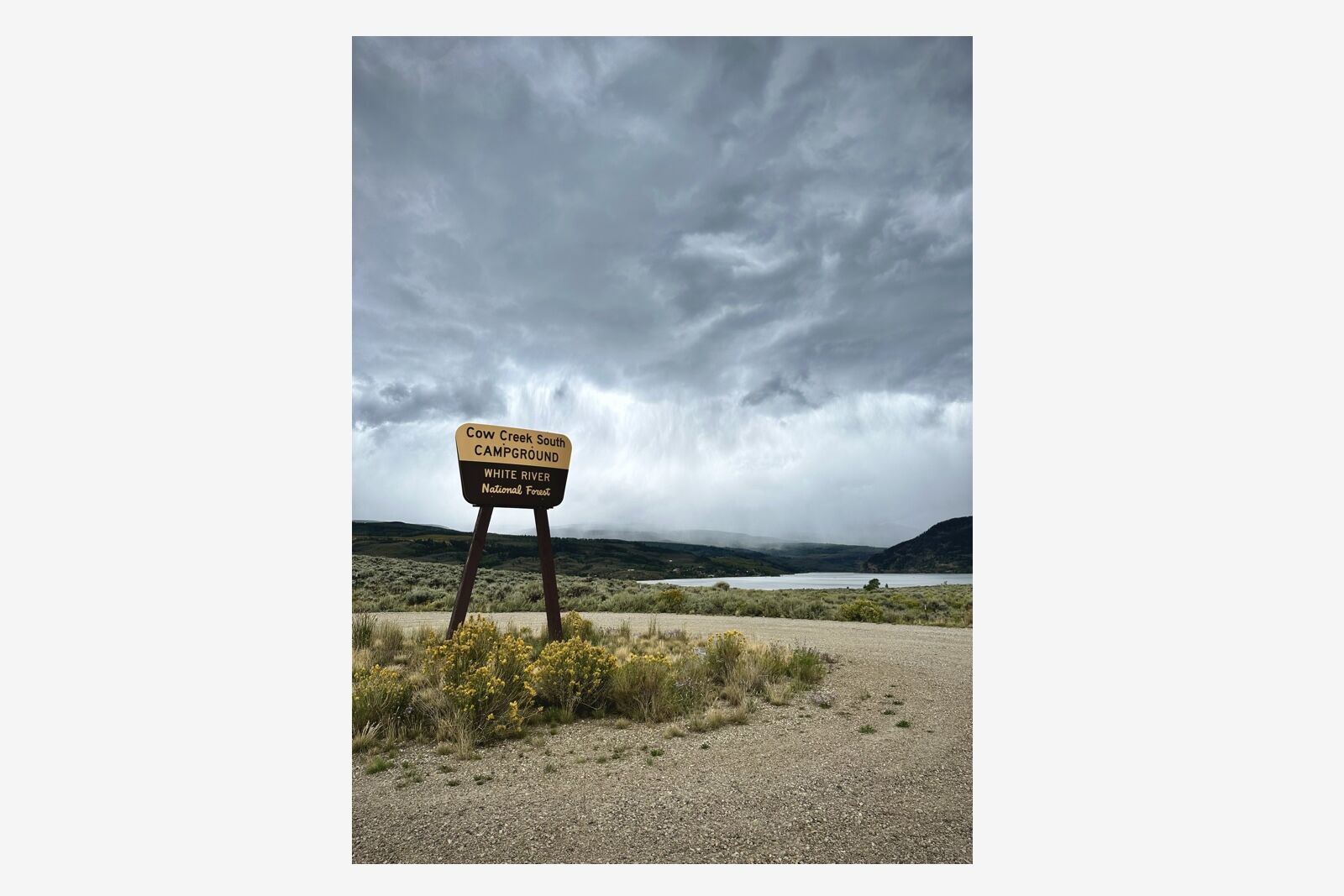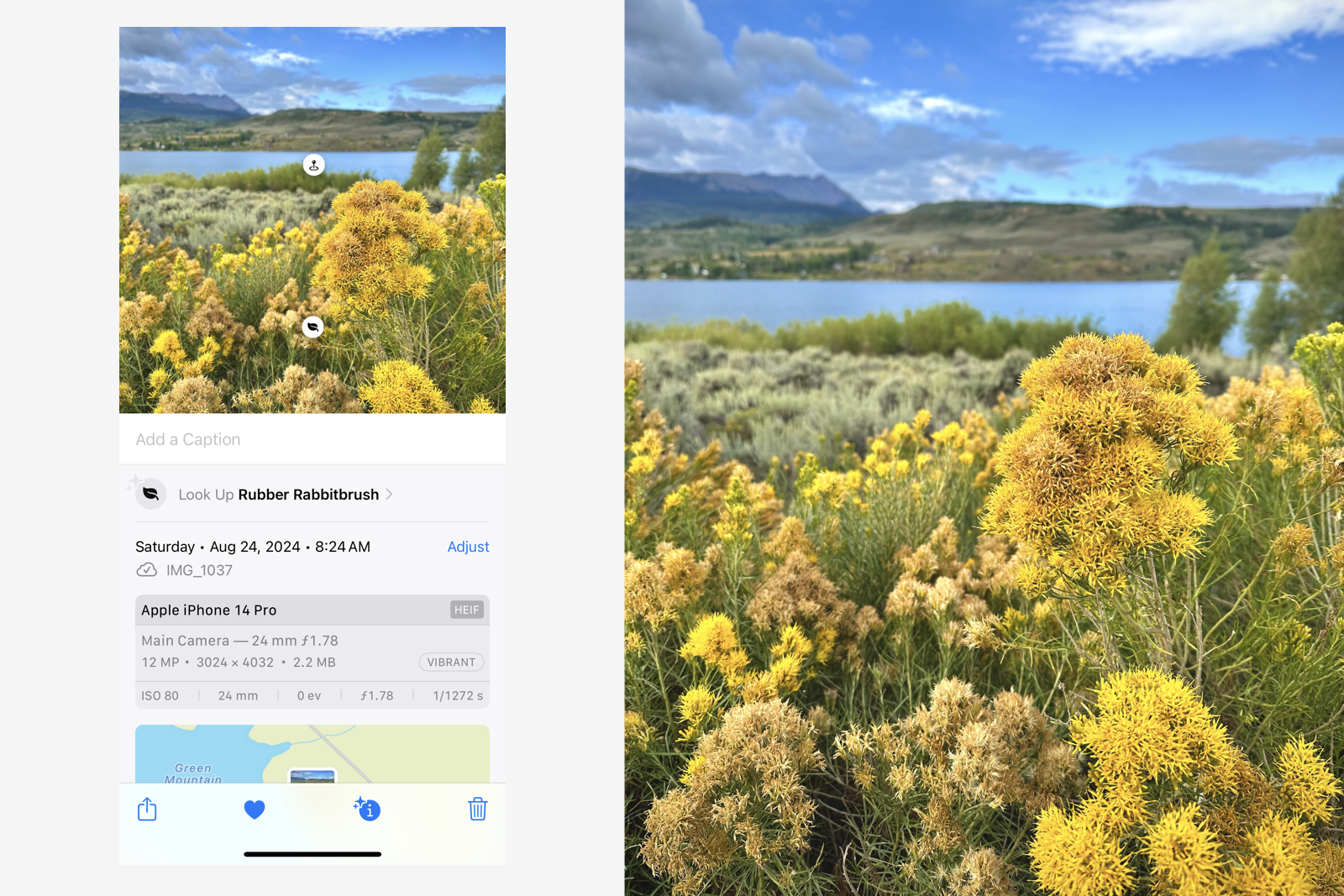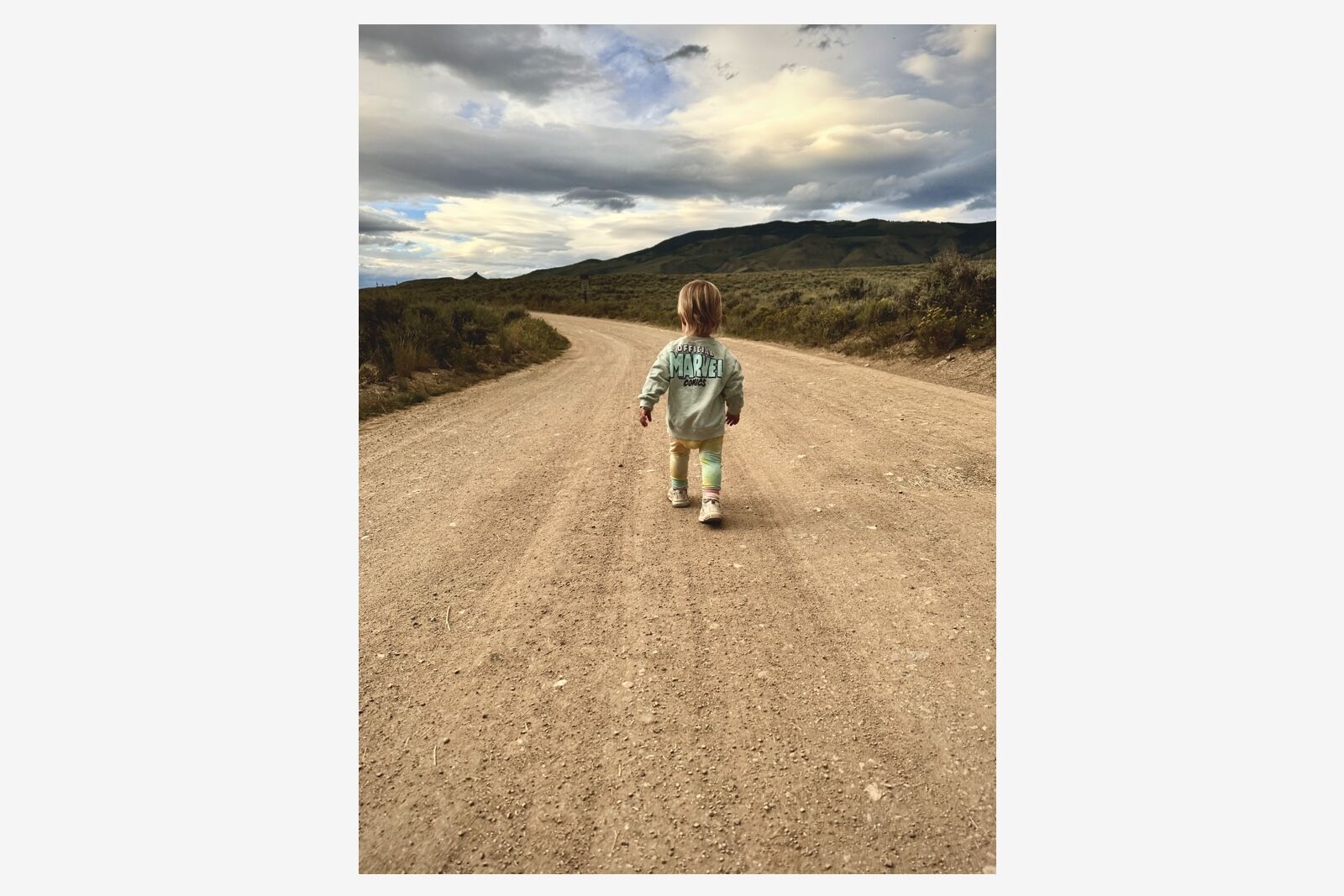You never know what type of weather you’re going to get in the mountains. It’s a fact I’ve come to embrace since moving to Denver in 2021. On the last prime-season camping trip in 2024, back-and-forth weather was top of mind as it went from blazing hot, to chilly, to lashing rain, to high-30s at night around Colorado’s Green Mountain Reservoir near Silverthorne.


The One Simple Tool Every Traveler Should Be Using More

Photo: Nickolaus Hines
Still, the in-between bouts of sunshine left plenty of time for kayaking, hikes, and exploring. The area is blessedly devoid of service. Though as someone who likes to learn about a place through its plants — native, introduced, or invasive, they all tell a story — this did present one problem: I couldn’t quickly identify what I was seeing. However, my iPhone’s Visual Look Up tool made it easy to do so on the drive back.
Apple released Visual Look Up in the spring of 2024. It’s one of my favorite uses of machine learning to come out this year, and has proved its worth countless times on trips near and far this year.
The technology is complicated, but the concept is simple. Photos saved on an iPhone’s camera roll, either a screenshot or a picture taken on the phone, has an info button. If the phone analyzes the content of the picture (as long as it’s running iOS 15 or later) and can identify what’s depicted, it can be immediately looked up. The icon might change to a paw print, indicating an animal was identified, or a leaf, for a plant. Tapping that icon when service is available will identify what’s in the picture, including the dog breed, plant species, landmark, or any other important information.

Photo: Nickolaus Hines
This isn’t exactly new-to-the-world tech. I previously relied on plant identification apps to do the same for plants, and then Google Lens (and before that, physical books). Apple puts it all in one place, though. Visual Look Up isn’t topic-specific like the plant ID apps, and I’ve pretty much abandoned Google Lens in recent months for the more reliable information Apple gives.
You don’t have to be a plant nerd or feel the draw to be able to name every dog breed you see for Visual Look Up to make your travel more fulfilling. Seeing a place is one thing, but learning about that place and what has shaped it is really what makes travel worth the unavoidable inconveniences that come along with any journey.

Photo: Nickolaus Hines
For me, that means being able to describe to my toddler exactly what type of flower she is obsessed with at the moment (and being able to tell if it’s safe to pick and tuck in her hair). The same goes for identifying various bugs she tries to pick up, or the history of some obscure landmark with a plaque rendered unreadable by time and the elements.
Travel is all about immersing yourself in what makes a place different from anywhere else. Even sterile resorts that feel like they could be anywhere have interesting features that can tell a story of the way that people and ideas move around the world. Digging deeper and doing some research leads to much more fulfilling trips. The first step to doing so can be as simple as taking a picture and diving into an identification rabbit hole.